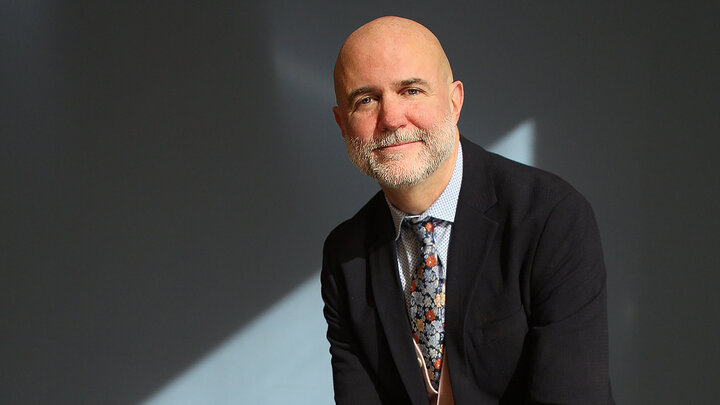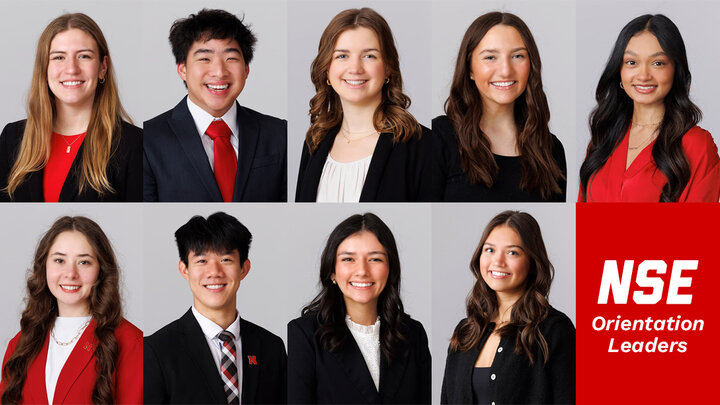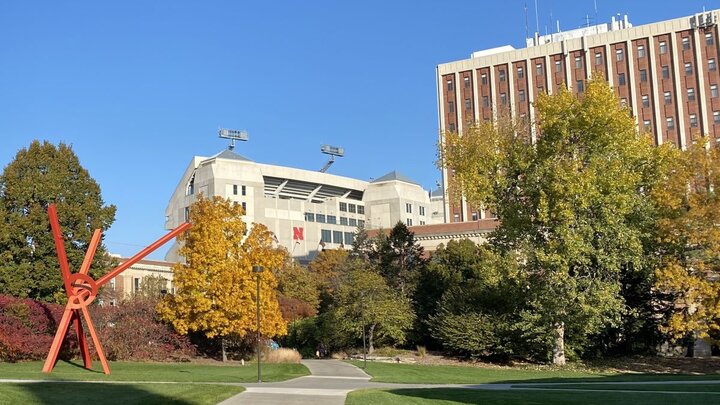Discoveries across disciplines in the humanities, sciences, and social sciences generated national and international media coverage for the College of Arts and Sciences at the University of Nebraska–Lincoln in 2023.
Kimberly Tyler, George Holmes University Professor of sociology (pictured above), has received a five-year, $3.4 million grant from the National Institutes of Health’s National Institute on Drug Abuse to develop a data-driven, app-based just-in-time intervention that provides youth experiencing homelessness with individualized support at critical junctures where alcohol and drug use may be a tempting coping mechanism. Stories on the project appeared in the Norfolk Daily News, Omaha World-Herald and The Center Square.
Jay Storz, Willa Cather Professor of biological sciences, and colleagues recently uncovered 13 mouse mummies from Andean summits stretching nearly 4 miles above sea level — suggesting that the seemingly modest mice are scaling and somehow living on the Mars-like peaks. Stories on the research appeared in BBC, CNN, Cosmos, the Daily Mail, IFL Science, Metro, Nature, Newsweek, Popular Science, Science, Scientific American, Smithsonian Magazine, The Sydney Morning Herald, The Telegraph and 100-plus other media outlets.
Annie Madsen, a May doctoral graduate; Daizaburo Shizuka, associate professor of biological sciences; and colleagues published a study in July showing that losing long-lasting flockmates may drive a golden-crowned sparrow to stray from its favorite overwintering spot, suggesting that friendly, familiar faces help anchor it to familiar spaces. Stories on the research appeared in Earth.com, The Wildlife Society and several other media outlets
Kelsy Burke, associate professor of sociology, gained media attention in 2023 for her research at the intersection of religion and sexuality. She wrote or co-wrote pieces for The Conversation (Feb. 23 and July 3), Religion News Service (July 7) and The Washington Post (July 27); and was quoted in April articles in The New York Times and The Week. She also published her latest book, “The Pornography Wars: The Past, Present and Future of America’s Obscene Obsession,” in April. It garnered positive reviews in The Atlantic, Los Angeles Times and Los Angeles Review of Books, among other outlets.
Patrice McMahon, Dean’s Professor of Teaching and Learning in the Department of Political Science and director of the University Honors Program, offered her expertise on international affairs throughout the year. She discussed Ukraine’s challenges related to post-war construction in a Feb. 14 Voice of America article; offered five takeaways on how Poland’s hospitality is helping Ukrainian refugees thrive for a March 2 piece in The Conversation; and explained how Poland’s Oct. 15 parliamentary election dealt a blow to populism and may hold important lessons for reversing democracy’s decline in an Oct. 31 column for The Conversation.
Husker faculty members assisted with several fact checks on the Lead Stories website throughout the year. The falsehoods they helped dispel included that mRNA vaccines used on animals can cause the involuntary vaccination of humans who eat their meat (mythbuster Eric Weaver, director of the Nebraska Center for Virology); and that there was once an advanced civilization known as the “Tartarian Empire” that was buried in a great “mud flood,” which reset society (mythbuster Bedross Der Matossian, history).
Qi (Steve) Hu, professor of Earth and atmospheric sciences, was interviewed for a Nov. 10 Scientific American article on whether farmers’ almanacs can be trusted for weather predictions. Two almanacs predicted colder weather and more snowfall this winter than last, but the National Oceanic and Atmospheric Administration said that the northern U.S. would be warmer than usual and the southern U.S. had even odds of cooler, average or warmer weather. “When you have so many things out there, and some of them are in conflict or totally opposite, which ones do you use?” Hu said. The almanacs use statistical weather forecasts, which rely on previously observed connections between variables, making them easy to run but limited by the inherent chaos of the weather system. “That prediction is based on some statistical relationship,” Hu said. “But that relationship may not hold for this year.”
Dawn O. Braithwaite, communication studies, December in AARP, bringing families together with games.
Thomas Gannon, English, August in The Washington Post and September in The Christian Science Monitor, his new book, “Birding While Indian: A Mixed-Blood Memoir.”
Casey Kelly, communication studies, December in PolitiFact, debunking Vivek Ramaswamy’s claim that “great replacement theory” is part of Democratic Party platform.
Tierney Lorenz, psychology, November in The New York Times, sexual side effects of antidepressants.
Kate Lyons, biological sciences, January in BBC Future, why giant prehistoric animals got smaller; March in Reuters, study on mammals that underwent “island effect” being at greater risk of extinction.
Laura Muñoz, history and ethnic studies, September in USA Today, generational language erosion caused by Americanization.
Gerald Steinacher, history, September in The Washington Post, Argentina’s crackdown on Nazi propaganda distribution and antisemitism; September in The New Yorker, Nazi special courts.
Pulled from Nebraska Today.




